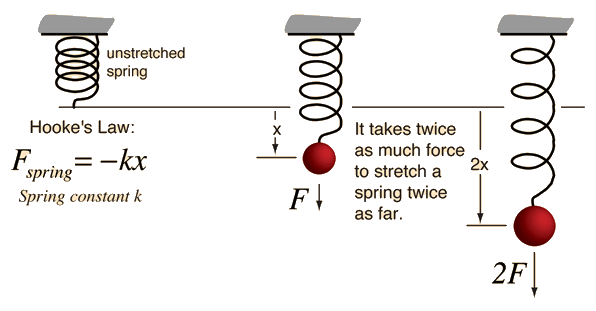Elasticity
Elasticity is the property of an object or material which causes it to be restored to its original shape after distortion. It is said to be more elastic if it restores itself more precisely to its original configuration. A rubber band is easy to stretch, and snaps back to near its original length when released, but it is not as elastic as a piece of piano wire. The piano wire is harder to stretch, but would be said to be more elastic than the rubber band because of the precision of its return to its original length. A real piano string can be struck hundreds of times without stretching enough to go noticeably out of tune. A spring is an example of an elastic object - when stretched, it exerts a restoring force which tends to bring it back to its original length. This restoring force is generally proportional to the amount of stretch, as described by Hooke's Law. For wires or columns, the elasticity is generally described in terms of the amount of deformation (strain) resulting from a given stress (Young's modulus). Bulk elastic properties of materials describe the response of the materials to changes in pressure.
|
Index
Periodic motion concepts |
